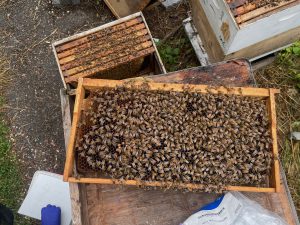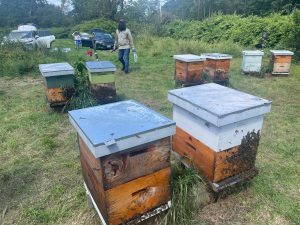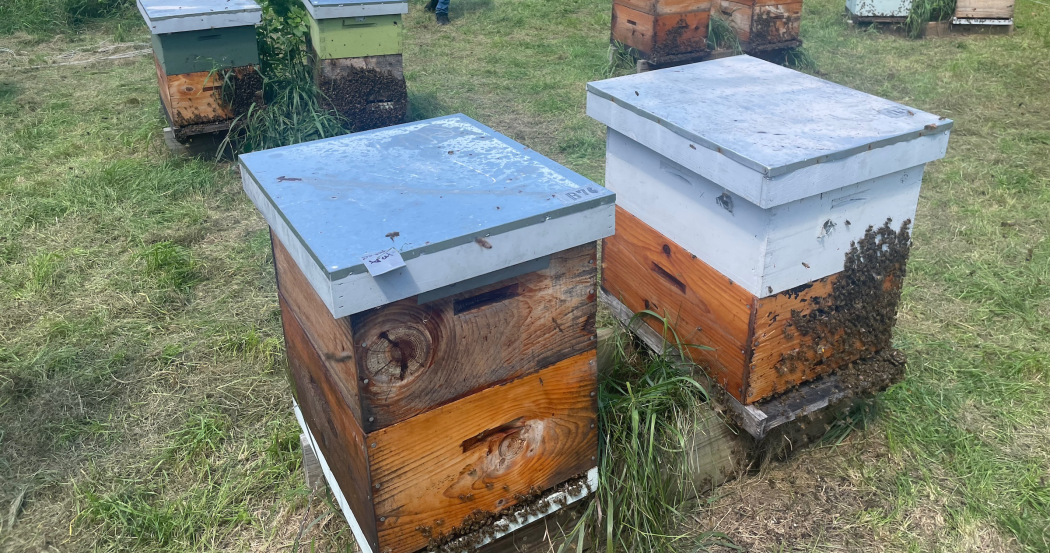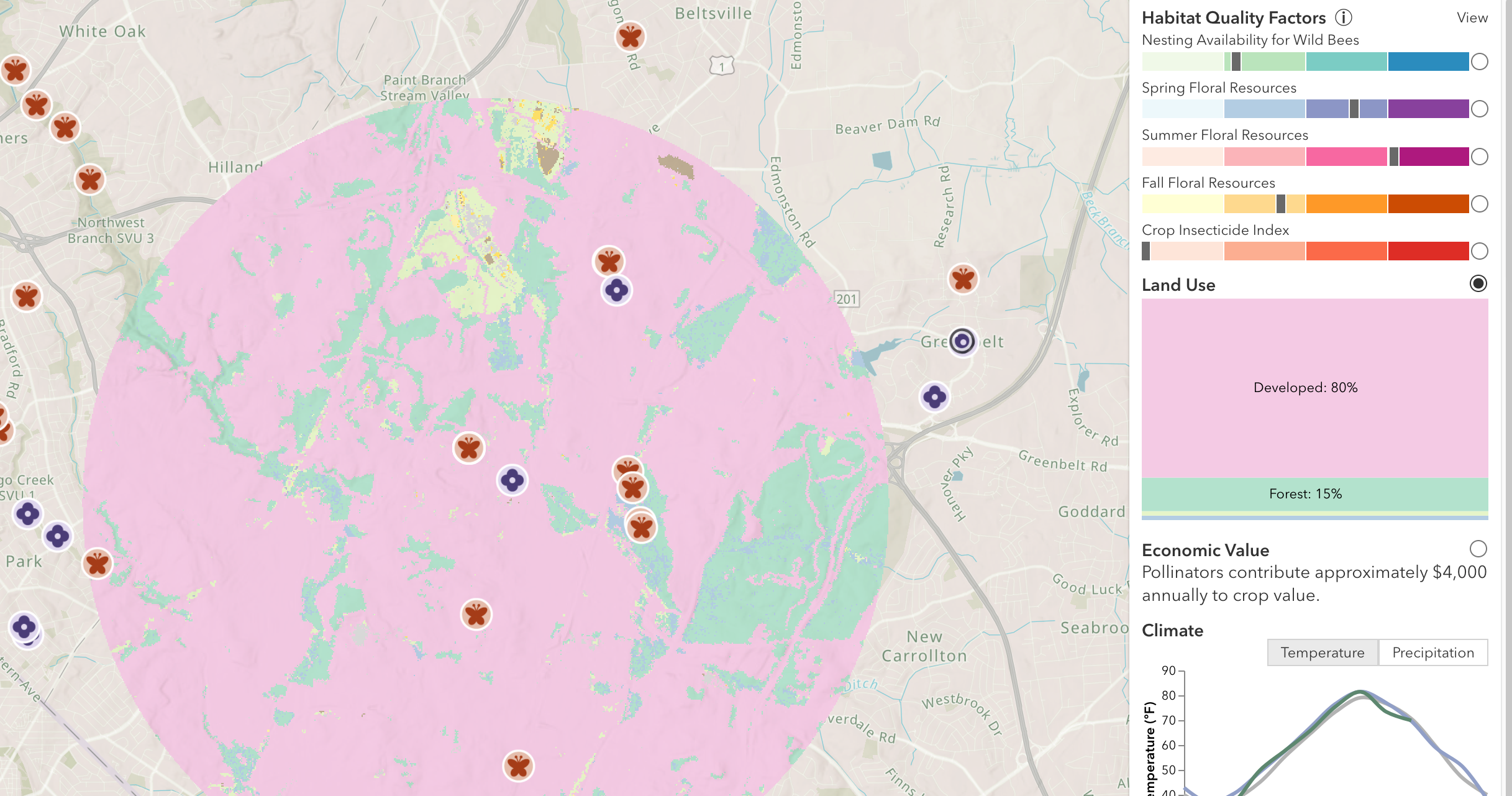Click Here if you listened. We’d love to know what you think. There is even a spot for feedback!
Read along below!
Found in Translation
Some Don’t Like It Hot
By: Jay Evans, USDA Beltsville Bee Lab
Despite a surprisingly long Summer and Fall, I am sure that by February we in the North will be hoping for some warmth. Your bee colonies might feel the same way, not simply so their food sources awaken but because they might benefit from the effects of high temperatures in reducing the impacts of pests and disease. So-called ‘social fever’ in honey bees, the ability of individual warm-bodied workers to heat up their local area, has been debated for three decades. Some cases are clearcut, such as bees in Japan that cook hornet invaders by bee-piling them at the entrance of hives (Ono, M.; Igarashi, T.; Ohno, E.; Sasaki, M. (1995) “Unusual thermal defence by a honeybee against mass attack by hornets. Nature 377:334-336. doi:10.1038/377334a0). This heating would not work at an individual level, so tens of bees join in each attack.

Social fever in bees was also proposed as a way to regulate fungal growth, and specifically chalkbrood disease (Starks, P.T.; Blackie, C.A.; Seeley, T.D. (2000) Fever in honeybee colonies. Naturwissenschaften 87:229-231. doi:10.1007/s001140050709). This makes sense. Fungi really prefer cooler temperatures than those in the brood nests of bees, and pushing hive temperatures above their optimum might lower infection. Indeed, colonies with chalkbrood infections ran hotter by a slight degree than did colonies not infected with this fungus. Unfortunately, recent work by Michael Goblirsch and colleagues does not support the idea that warmer bees help fend off disease (Goblirsch, M.; Warner, J.F.; Sommerfeldt, B.A.; Spivak, M. (2020). Social fever or general immune response? Revisiting an example of social immunity in honey bees. Insects 11:1-12. doi:10.3390/insects11080528). Brood areas around infected bees were indeed slightly higher, as in the earlier study, about 1 degree Centigrade. However, given the growth patterns of the chalkbrood fungus, these authors suggest that this small observed change in temperature had little effect on disease, and in fact the disease in their experimental colonies progressed just fine. Instead, the authors suggest that an increase in temperatures seen in both studies could reflect immune responses of infected larvae, and not heat from their nursing sisters. This seems reasonable and closer to our own fever response.
Even if they don’t fight disease with social fever, bees could benefit from consistently higher hive temperatures, or conversely could be more vulnerable to disease when the season makes it difficult to keep the hive core warm. Anne Dalmon and colleagues showed just that. In their study, young bees raised across a wide range of temperatures, from 15 degrees C (about 59oF) to 43oC (109oF, far higher than the normal core of the hive) showed lower virus levels as temperatures went up (Dalmon, A.; Peruzzi, M.; Le Conte, Y.; Alaux, C.; Pioz, M. (2019) “Temperature-driven changes in viral loads in the honey bee Apis mellifera.” Journal of Invertebrate Pathology 160:87-94. doi:https://doi.org/10.1016/j.jip.2018.12.005). This effect was strongest at abnormally high temperatures (>34oC), but bees are unlikely to favor this as a strategy, since their own mortality goes up dramatically above normal hive temperatures with or without viruses. Similarly, pushing bees to temperature regimes above the typical core temperature of (e.g., to 37oC) seems to inhibit a key virus protein, but the window between curing bees of viruses and killing them with the kindness of fever is extremely tight and it’s hard to imagine that bees or beekeepers could thread that needle consistently (Palmer-Young, E.C.; Ryabov, E.V.; Markowitz, L.M.; Boncristiani, D.L.; Grubbs, K.; Pawar, A.; Peterson, R.; Evans, J.D. (2023) Host-driven temperature dependence of Deformed wing virus infection in honey bee pupae. Communications Biology 6. doi:10.1038/s42003-023-04704-6).

So…these are examples of the hive environment increasing via social or domestic fever, but is individual fever an important thing in bees as it is in other animals? Plenty of mammals, lizards, bids, and insects that don’t have adoring nestmates or nest structures to keep them warm are known to increase their body temperatures when sick. In honey bees, there is new evidence that developing brood parasitized by Varroa mites turn their body temperature up a notch (Sipos, T.; Orsi-Gibicsár, S.; Schieszl, T.; Donkó, T.; Zakk, Z.; Farkas, S.; Binder, A.; Keszthelyi, S. (2024) “Tracking Varroa parasitism using handheld infrared cameras: Is eusocial fever the key?” Insects, 15, 693. https://doi.org/10.3390/insects15090693. Here, the authors showed that developmental stage certainly affects temperature (bees in the middle days of pupation give off more heat than younger or older bees), but there were also subtle differences between mite-parasitized bees and those that escaped mites, visible only with cameras sensitive to fractions of a degree at a resolution far smaller than capped cells. Does this temperature increase impact mite development? Help to manage mite disease in any larger sense? Or simply reflect the physical groan of a bee whose life has been altered irreversibly? One earlier study proposed that bees parasitized by mites had higher temperatures thanks to their battles with triggered viruses (Bauer, D.; Wegener, J.; Bienefeld, K. Recognition of mite-infested brood by honeybee (Apis mellifera) workers may involve thermal sensing. (2018) J. Therm. Biol., 74, 311–316) and that these virus-infected bees were better at signaling for help from hygienic nestmates. Future experiments are needed to test that hypothesis. With the infrared technology used by Sipos and colleagues, it is certainly possible to contrast infected and uninfected bees with everything from bacteria to viruses and gut parasites to see if infection causes fever. Especially for adult bees, turning one’s flight muscles up a notch, or perhaps muscles in the abdomen, seems possible as a way to increase body temperature. How hard would they have to work to have an impact? Which diseases could be decreased in that way? Like us, bees can certainly detect infections at a physical level, and indeed they mount both cell-based and protein-based immune responses against pretty much all infections. There’s a lot of potential that these responses can be boosted by temperature bumps driven by individual sick bees, their nestmates, or beekeepers. New bee thermometers and techniques for controlled infections will make this a hot field of study.












